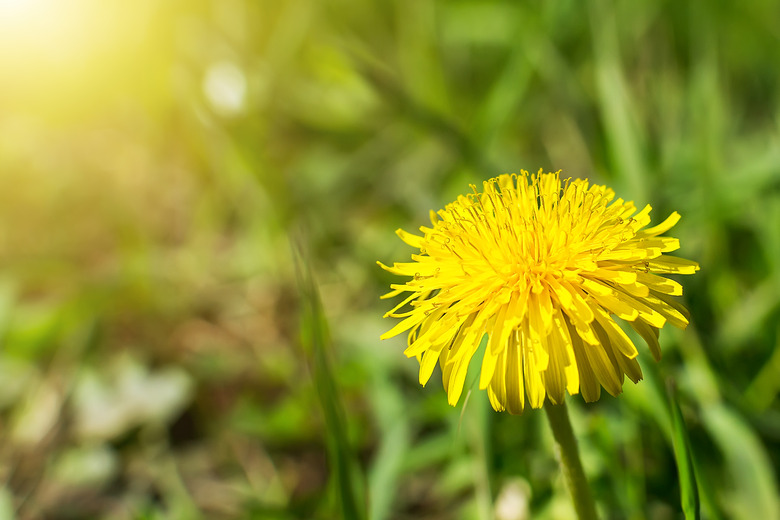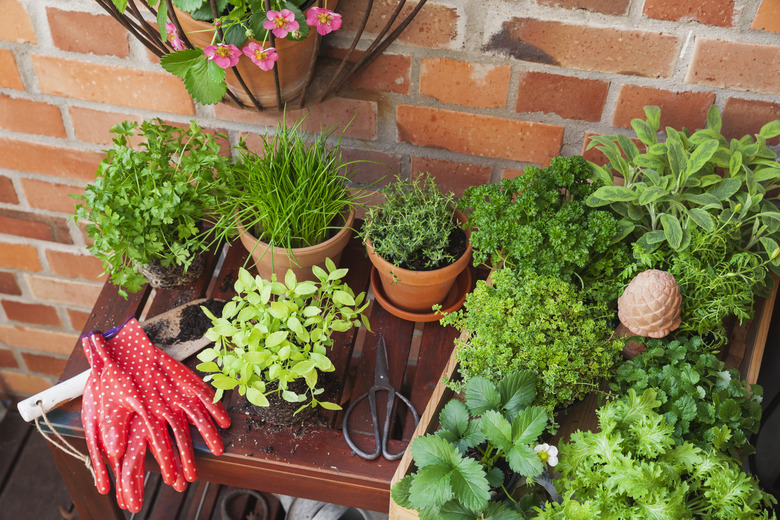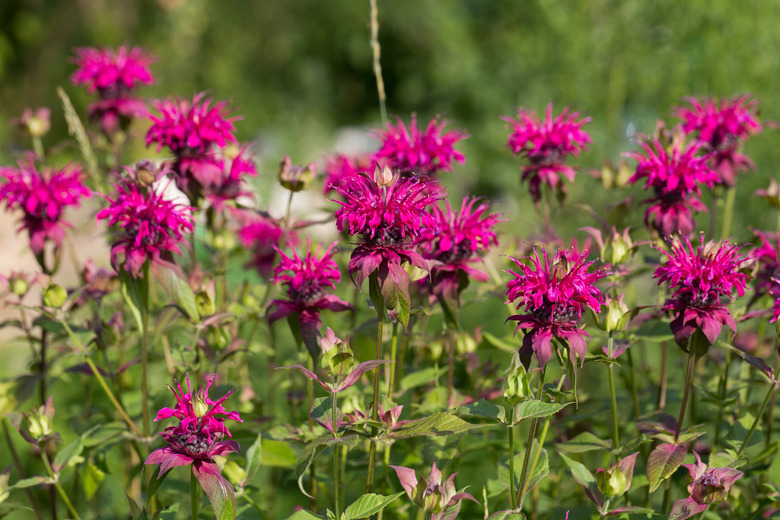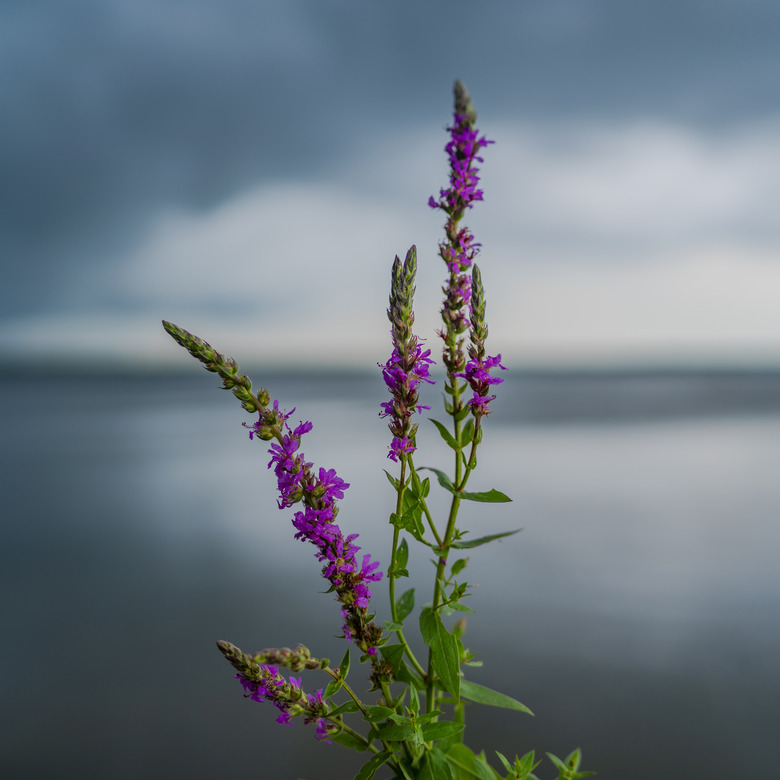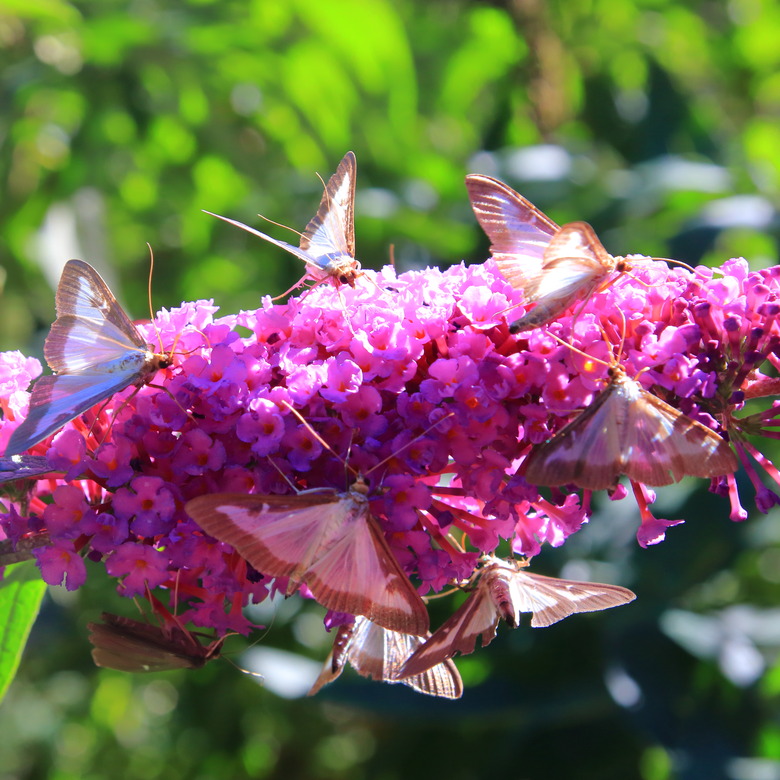Invasive Garden Plants To Avoid
Sometimes when we plant a garden, we end up with too much of a good thing. Consider the common dandelion, Taraxacum officinale. The Puritans introduced it to North America during the 1600s because they valued the plant for medicines, beverages, and food. Now dandelions are a rampant weed across North America. So when you're planning an herb garden, butterfly garden, or any other type of planting, take precautions or avoid plants with an aggressive growth habit to save yourself a headache and backache later as you try to rein it in.
Before we dig in, let's clarify a few terms.
- A weed is any plant growing where it isn't wanted. To use the term precisely, this can include plants that some people may deliberately plant but which are unwanted by other people. What serves as delightful ground cover for your neighbor may be viewed by use as an annoying weed.
- An aggressive plant species__, such as the dandelion, grows quickly and produces lots of seeds without much care. It often spreads where you don't want it, and it may require constant attention to keep it in good behavior. Some aggressive garden species may naturalize and pose a threat to native vegetation in the wild, even though they are not formally categorized as invasive.
- An invasive plant species refers to a species that is not native to the environment and which spreads in an aggressive manner that threatens to overtake surrounding native plants. Freed from their natural controls, these plants grow quickly, produce lots of seeds, and can run rampant when naturalized in the wild. This super-aggressive growth can disrupt ecosystems, cause economic harm to agriculturalists and land managers, and even pose a health risk to animals and humans. (Note that most non-native plants perform well in a new environment; only select species are categorizes as truly invasive. )
Tip
Beware of any plants with descriptions including phrases like "carefree," "vigorous," "establishes quickly," or "grows anywhere". Those descriptors are synonymous with aggressive growth habit.
Aggressive Plant Species
Aggressive Plant Species
Plants can spread from a rhizome (a root system often referred to as a runner) or seeds—or both. The easiest way to contain plants that spread underground is to plant them in a container or an area with distinct boundaries, such as a sidewalk, driveway, patio, building foundation, or deeply buried edging. If you don't take these precautions, you'll need to dig out new shoots each spring to keep plants from expanding their territory. If free seeding is an issue, you can deadhead flowers before mature seeds form.
Herbs
Potted herb gardens are popular because they keep aggressive root systems under control. In the case of free-seeding herbs, you can either move a plant indoors, remove the blooms, or watch for new seedlings and promptly remove them. The list below includes commonly grown herbs, and you can peruse an extensive listing of aggressive and invasive herbs.
- Mints (Mentha spp.)
- Lemon balm (Melissa officinalis)
- Bee balm (Monarda didyma)
- Oregano (Origanum vulgare)
- Chives, garlic (Allium tuberosum)
- Fennel (Foeniculum vulgare)
- Horseradish (Armoracia rusticana)
- St. John's wort (Hypericum perforatum)
- Violet (Viola odorata)
- Yarrow (Achillea spp.)
Ornamental Grasses
Grasses grow in either clumps or from rhizomes. As mentioned earlier, rhizomes spread under ground and become very aggressive. So avoid the following ornamental grasses and only choose those that grow in a clump or neat mound.
- Giant silver banner grass (Miscanthus sacchariflorus robustus)
- Blue lyme grass (Leymus arenarius)
- Cordgrass (Spartina alterniflora)
- Weeping lovegrass (Eragrostis curvula)
Flowers
When starting a flower garden, it's so tempting to include plants that grow easily with little care. That's why the following aggressive bloomers are popular. But left unchecked, they can take over an entire flower bed and even spread into a lawn.
- Chinese lantern (Physalis alkekengi)
- Common yarrow (Achillea millefolium)
- Gooseneck loosestrife (Lysimachia clethroides)
- Ajuga or bugleweed (Ajuga reptans)—most aggressive in warmer climates without a winter frost
- Daylilies (Hemerocallis spp.)
- Lily of the valley (Convallaria majalis)
- Obedient plant (Physostegia virginia)
- Common foxglove (Digitalis purpurea)
Ground Cover
- Moneywort (Lysimachia nummularia)
- Winter creeper or creeping euonymus (Euonymus fortunei)
Invasive Plant Species
Invasive Plant Species
Typically a gardener can find ways to control aggressive plants and enjoy them in a garden. However, non-native invasive species are different. They can cause economic harm, environmental harm, or harm to human health. When someone introduces a non-native plant, the plant might grow aggressively in its new ecosystem where natural competition no longer exists. It chokes out native plants and disrupts the natural balance of an ecosystem. When that happens, people who care for the land, such as farmers and national parks managers, end up spending billions of dollars to control the spread and protect fragile species of plants and animals.
That's why government organizations, university extension services, and other gardening experts are educating gardeners that their choices can impact land beyond their own yards. Sadly, we can't assume that plants at a local garden center are fit for our ecosystem. For example, garden centers offered purple loosestrife as a beautiful flowering plant for our landscapes, unwittingly introducing a species that now invades the entire United States. Even now purple loosestrife cultivars that growers claim to be sterile have 90% germination rates.
The United States Department of Agriculture compiles a general list of invasive species, including a state-by-state list of legally noxious plants. Keep in mind that invasive plants don't necessarily pose a threat everywhere. Generally, a plant only will grow in an environment that mimics its natural habitat, which includes climate, rainfall, and soil type. Below is a list of invasive species, as well as notations of where the plant is especially problematic.
Vines and Ground Cover
- Oriental bittersweet (Celastrus orbiculatus)—especially Northeast, Southeast, Midwest
- English ivy (Hedera helix)—especially Northwest
- Japanese honeysuckle (Lonicera japonica)—especially Northeast, Southeast, Midwest
- Periwinkle (Vinca minor)—entire United States
- Porcelain berry (Ampelopsis brevipedunculata)—especially Northeast
- Chinese wisteria (Wisteria sinensis)—especially Southeast
- Kudzu (Pueraria montana var. lobata) – especially Southeast
- Sweet autumn clematis (Clematis terniflora) – especially East and lower Midwest
Flowers
- Purple loosestrife (Lythrum salicaria and L. virgatum)—entire United States
- Garden loosestrife (Lysimachia vulgaris)
- Bachelor's buttons (Centaurea cyanus)—especially Midwest
- Spotted knapweed (Centaurea maculosa)—especially West and Midwest
- Queen Anne's lace (Daucus carota)—especially Northeast
- Dame's rocket (Hesperis matronalis)—entire United States
- Ox-eye daisy (Leucanthemum vulgare)—especially Northeast
- Soapwort, bouncing bet (Saponaria officinalis L.)—especially West
- Common tansy (_Tanacetum vulgare)—_especially West
- Common mullein (Verbascum thapsus)—entire United States
- Japanese knotweed (Fallopia japonica)—entire United States
- Tansy (Tanacetum vulgare)
Ornamental Grasses
- Ribbon grass (Phalaris arundinacea)— especially Midwest
- Japanese silver grass (Miscanthus sinensis)—especially Northeast, Southeast, andMidwest
- Fountain grass (Pennisetum setaceum)—especially West
- Giant reed (Arundo donax L.)—especially West, Southwest, and South
- Pampas grass (Cortaderia selloana)
- Bamboo (Phyllostachys spp.)
Shrubs
-
Wisteria (Wisteria sinensis)
-
Burning bush (Euonymus alatus)—especially Northeast and Midwest
-
Nandina/sacred bamboo (Nandina domestica)
-
Chinese privet (Ligustrum sinense)—especially Northeast
-
Common Privet (Ligustrum vulgare)—especially Southeast
-
Autumn olive (Elaeagnus umbellata)—especially Northeast, Southeast, and Midwest
-
Japanese barberry (Berberis thunbergii)—especially Northeast and Midwest
-
Japanese spirea/Japanese meadowsweet (Spiraea japonica)
-
Butterfly bush (Buddleia davidii)—especially Southeast, Northwest, and West
-
Scotch broom (Cytisus scoparius)—especially Northwest
-
English holly (Ilex aquifolium)
-
Tamarisk (Tamarix ramosissima)—especially West and Southwest
-
Bush honesuckle (Lonicera maackii)—entire United States
-
Tatarian honeysuckle (Lonicera tatarica)—entire United States
-
Multiflora rose (Rosa multiflora)
—especially Northeast, Southeast, and Midwest
